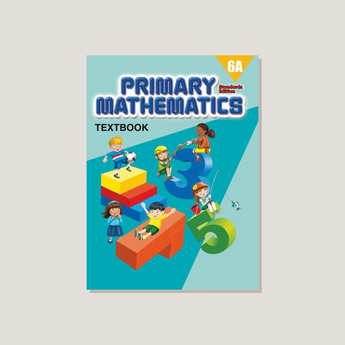Unveiling the Ideal Shortcuts for Addressing Math Problems Quickly
In the domain of maths, efficiency is crucial. Mastering faster ways can transform the means people approach troubles. From leveraging the distributive building to employing fast multiplication techniques, these approaches enhance both rate and accuracy. Furthermore, recognizing patterns simplifies intricate calculations. As one checks out these approaches, they might uncover unexpected insights that can transform their mathematical experience. What are the most effective techniques that can be conveniently incorporated right into daily method?
Mastering Psychological Mathematics Techniques
How can one boost their calculation speed without counting on calculators? Grasping psychological math techniques uses a practical service. By utilizing approaches such as breaking numbers into smaller sized, convenient parts, individuals can streamline intricate estimations. When adding two-digit numbers, rounding each number to the nearby 10 can make psychological enhancement simpler before changing back to the original values.
One more efficient strategy is to exercise reproduction tables thoroughly, making it possible for quick recall of products (struggles in primary math). Additionally, acknowledging patterns in numbers can facilitate faster calculations, such as using the buildings of also and weird numbers. Normal technique via puzzles and games can further refine these abilities, making psychological mathematics a lot more user-friendly
Eventually, growing self-confidence in one's arithmetic abilities enables quicker decision-making and enhances total mathematical proficiency. By incorporating these methods, any individual can substantially boost their computation speed.
Utilizing the Distributive Residential Or Commercial Property
The Distributive Property is a basic idea in maths that streamlines calculations by allowing reproduction across addition or reduction. It is vital for pupils to realize its application with practical instances, which can improve their problem-solving abilities. Furthermore, recognizing usual mistakes can even more solidify their understanding and protect against errors in future computations.
Recognizing the Distributive Residential Property
Mastering the distributive property can substantially simplify mathematical computations. This basic building states that when increasing a single term by an amount or difference, one can disperse the multiplication throughout each term within the parentheses. For instance, in the expression a(b + c), one can reword it as ab + air conditioner. This technique not just improves estimations but likewise boosts understanding of how numbers connect (struggles in primary math). The distributive property is particularly helpful in algebra, where it helps in streamlining expressions and solving equations. In addition, it lays the foundation for much more intricate principles, such as factoring and polynomial operations. By comprehending the distributive property, students can establish a strong foundation for dealing with a variety of mathematical challenges efficiently
Practical Examples Illustrated
Why is it essential to apply the distributive residential property in practical scenarios? The distributive residential or commercial property permits people to streamline complex calculations, making problem-solving a lot more reliable. For example, when determining the overall expense of several products, one can utilize the expression 5(2 + 3) to discover the overall price of 5 things valued at $2 and $3. By distributing, the calculation becomes 5 × 2 + 5 × 3, yielding a quicker outcome of $25. Another instance is in algebra, where simplifying expressions like 3(x + 4) can be achieved via circulation, leading to 3x + 12. Such applications show the efficiency of this building in numerous real-world scenarios, improving both rate and precision in mathematical problem-solving.
Usual Errors to Prevent
Although the distributive home is a powerful tool in maths, typical mistakes can lead to wrong results. When trainees forget to disperse the coefficient to each term within parentheses, one frequent mistake occurs. As an example, in the expression 3(x + 4), failing to apply the building properly can lead to omitting the reproduction, producing a wrong response. Another error includes defalcating the property by including instead of increasing, especially when negative indications are involved. Furthermore, pupils may disregard to streamline the outcome, which can unknown errors made during circulation. Recognizing and preventing these challenges can enhance analytical performance and accuracy when using the distributive property in different mathematical contexts.
Quick Reproduction Shortcuts
In the domain name of fast multiplication shortcuts, methods like increasing by powers of 10 and the increasing and halving approach stand apart. These methods can substantially streamline estimations, making them extra accessible. Comprehending these shortcuts can improve performance in mathematical analytic.
Increasing by Powers of 10
When increasing by powers of 10, the procedure comes to be extremely uncomplicated, as the procedure mostly entails changing the decimal factor. Multiplying a number by 10 needs moving the decimal one place to the right, while multiplying by 100 necessitates a shift of 2 areas. This simpleness expands to bigger powers, where each extra no suggests another decimal shift. Multiplying 5.6 by 1,000 results in 5,600. This method substantially boosts rate and precision, as people can swiftly envision the outcome without complicated calculations. Such effectiveness is especially beneficial in psychological math or when time is limited, permitting rapid problem-solving in numerous mathematical contexts. Mastering this strategy is crucial for any individual aiming to boost their math skills.
Increasing and Cutting In Half Method
The Increasing and Cutting in half Approach supplies a reliable technique for fast reproduction, especially when dealing with even numbers. This method entails changing a multiplication trouble into a less complex type by either doubling one of the numbers and halving the other. To determine 16 × 25, one can cut in half 16 to get 8 and double 25 to get 50, resulting in 8 × 50, which equates to 400 (struggles in primary math). This method streamlines calculations, making them much more workable. It is particularly valuable in mental mathematics, enabling people to work with problems quickly and properly. By leveraging this method, pupils and specialists can improve their mathematical dexterity, thus boosting overall effectiveness in mathematical jobs

Efficient Division Methods
Department usually postures obstacles for lots of students, utilizing effective strategies can greatly streamline the process. One effective technique is making use of suitable numbers, which entails rounding the divisor and returns to much easier values that are close to the initial numbers. This approach makes psychological computations more convenient. Another article strategy is the estimate method, where learners can discover a rough answer before executing the specific department, supplying a useful standard for precision.
Moreover, the long division technique continues to be a staple for separating bigger numbers. By damaging the process into smaller sized, extra absorbable steps, learners can keep clearness. The repeated reduction approach can likewise be useful, particularly for those that battle with even more abstract principles. By systematically deducting the divisor from the returns, people can visualize the procedure. Overall, these techniques can boost division abilities, resulting in quicker and much more accurate problem-solving capacities.
Quick Addition and Reduction Methods
Just how can learners boost their speed and precision additionally and subtraction? One reliable technique is to make use of mental mathematics methods, such as breaking numbers into smaller sized, much more manageable parts. For example, when including 47 and 36, one can initially add 40 and 30 to get 70, then include the continuing to be 7 and 6 to reach 83. This method simplifies calculations and decreases mistakes.
One more strategy entails making use of the number line for visual students, helping them click now to see the relationships between numbers and improve their understanding. Additionally, practicing with tools like flashcards can enhance fast recall of standard amounts and differences.
Furthermore, learners can benefit from familiarizing themselves with benchmark numbers, such as rounding to the nearby 10, which permits for quicker estimates. By including these techniques into their technique, learners can greatly boost their rate and precision in basic arithmetic operations.
Leveraging Evaluation for Quick Calculations
Evaluation acts as an effective device for enhancing calculation speed, matching mental math methods properly. By rounding numbers to their nearest whole values, people can streamline complicated estimations, making it less complicated to come to an approximate result quickly. For example, when confronted with a problem like 198 + 267, rounding to 200 + 270 yields a fast estimate of 470, enabling the solver to evaluate the accuracy of the final answer.
Furthermore, estimation is particularly useful in scenarios entailing reproduction and division. By rounding factors to less complex numbers, one can promptly assess approximate products or quotients. This technique not just conserves time but also helps in identifying prospective mistakes in calculations.
Identifying Patterns and Solutions
Patterns and formulas are crucial devices in maths that allow individuals to solve troubles extra successfully. Acknowledging these patterns allows learners to recognize relationships in between principles and numbers, which can streamline complicated calculations. For circumstances, identifying the square formula (ax ^ 2 + bx + c = browse around this web-site 0) helps with fast options to various equations.
Patterns in sequences, such as math or geometric progressions, assistance people forecast future terms without substantial estimations. Formulas, on the various other hand, work as shortcuts, allowing for faster analytic by enveloping complex connections right into convenient expressions.
Regularly Asked Questions
Exactly How Can I Boost My Emphasis While Fixing Mathematics Issues Promptly?
To boost emphasis while solving math issues rapidly, one can remove interruptions, established details goals, practice mindfulness methods, take normal breaks, and keep a consistent study routine to improve focus and psychological quality.
What Apps or tools Assist with Quick Mathematics Problem-Solving?
Numerous devices and apps, such as Photomath, Microsoft Math Solver, and Desmos, improve quick mathematics analytical. These sources supply detailed solutions, graphing capabilities, and instant comments, making them important for trainees and specialists alike.
Exist Certain Math Shortcuts for Standardized Examinations?
Yes, details mathematics faster ways for standardized tests include methods like evaluation, comprehending number properties, utilizing the process of removal, and understanding usual solutions. These strategies enhance speed and precision, boosting total examination performance.

Exactly how Do I Practice Mathematics Shortcuts Efficiently?
To practice mathematics shortcuts properly, individuals ought to on a regular basis solve diverse problems, make use of online resources, and take part in timed drills. Consistency and representation on blunders improve understanding, ultimately bring about enhanced rate and precision in calculations.
Can Shortcuts Be Applied to Intricate Math Problems?
Faster ways can certainly be used to complicated math issues, although their effectiveness differs. Mastery of fundamental concepts and critical thinking makes it possible for people to simplify processes, making it easier to take on intricate estimations efficiently.
By using techniques such as damaging numbers into smaller sized, workable parts, people can streamline complicated estimations. Furthermore, recognizing patterns in numbers can assist in faster computations, such as using the buildings of even and weird numbers. Estimate offers as an effective tool for enhancing calculation rate, matching mental math approaches effectively. By rounding numbers to their nearest entire worths, individuals can streamline intricate estimations, making it simpler to show up at an approximate outcome swiftly. Identifying these patterns enables students to identify connections in between concepts and numbers, which can simplify complex computations.